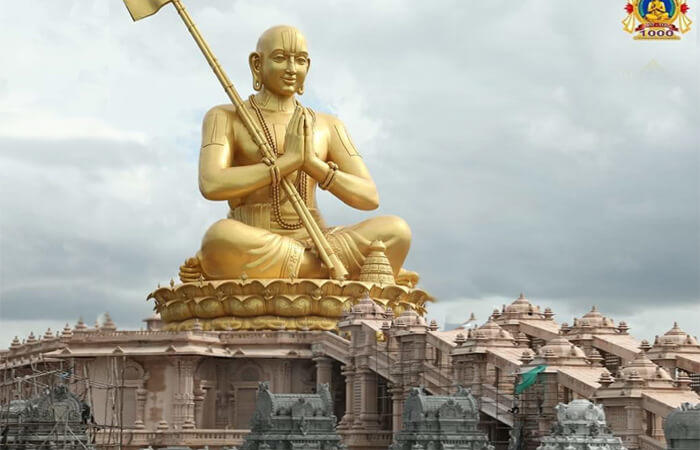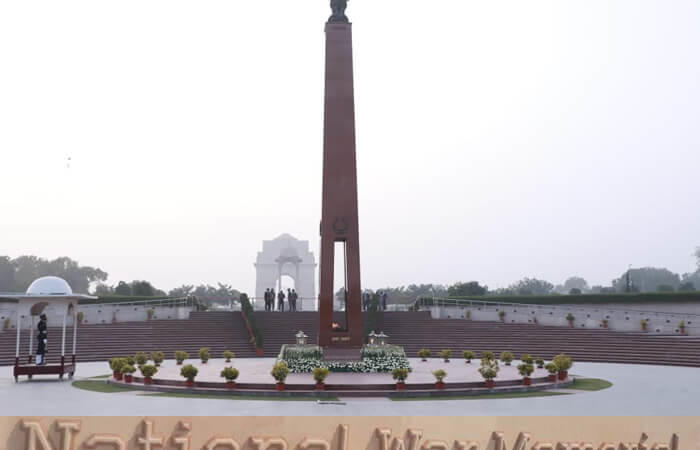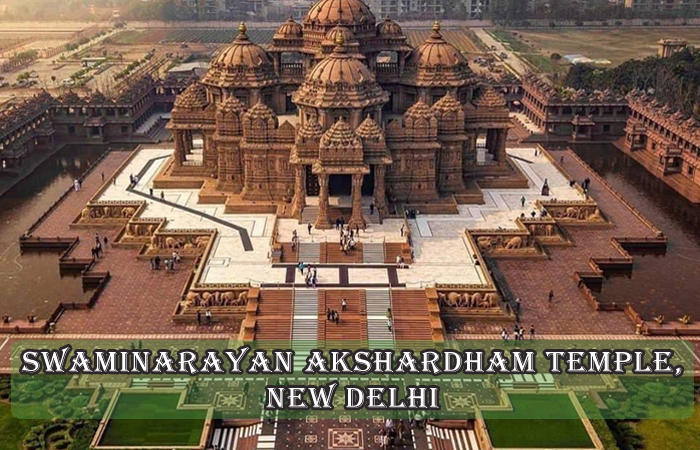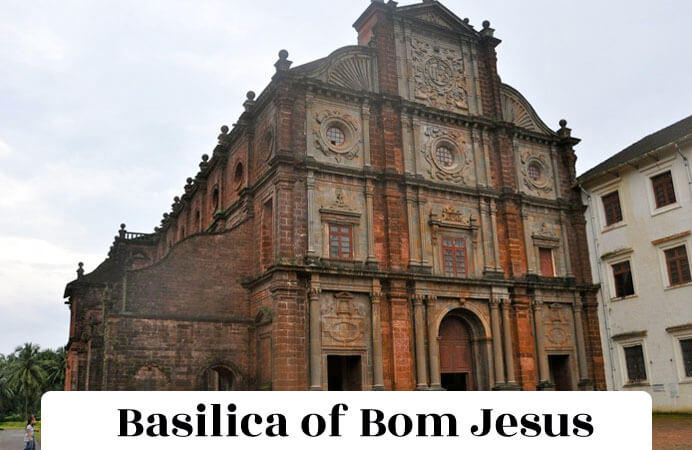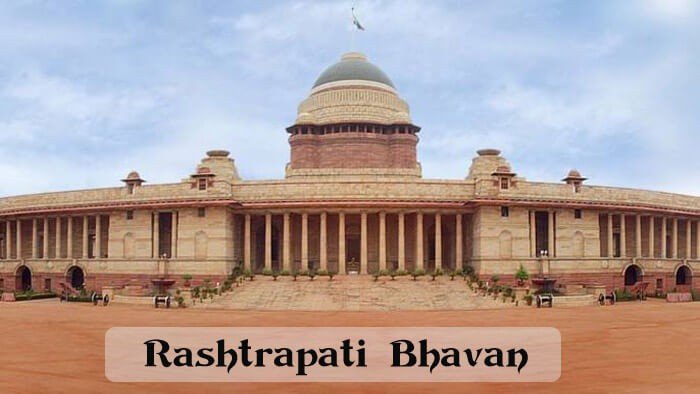Rani Ki Vav | Queen’s Stepwell
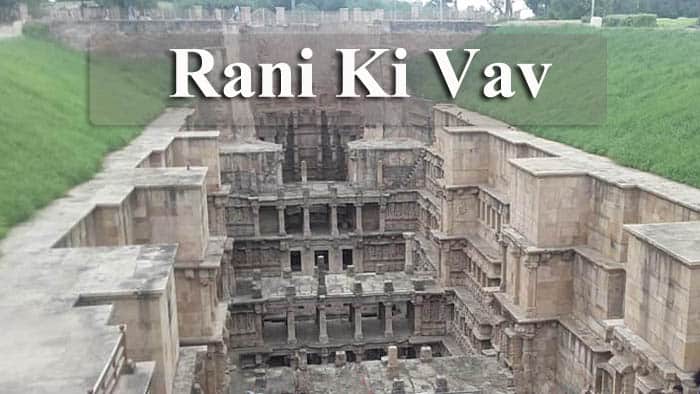
Rani Ki Vav is a famous stepwell located in Patan district of Gujarat state, India. It is one of the oldest and historical heritage of India. It is a grand stepwell on the banks of the Saraswati river in Gujarat, whose building is seven storeyed. The stepwell has a number of distinct names in Hindi it is called bawdi, baoli and in Gujarati, it is called Vav and in Marathi it is called barav.
This one-of-a-kind stepwell “Rani ki Vav” is surrounded by very attractive artifacts and sculptures from all around. This historic stepwell was built in the 11th century in memory of King Bhimdev of the Solanki dynasty by his wife Rani Udayamati. Situated on the banks of river Saraswati, this stepwell has been included in the list of World Heritage on 23 June 2014 by UNESCO due to its amazing and huge structure.
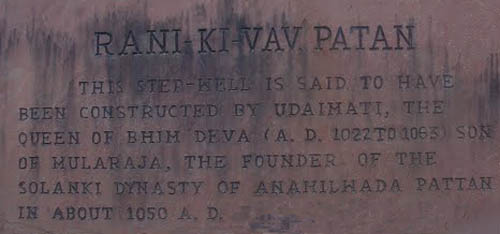
This in itself is a unique structure, which is slightly different from the sources of underground water. More than 500 sculptures have been displayed brilliantly inside this huge historical structure. This historic stepwell has also been printed on a new 100 rupee note issued by RBI in the year 2018.
Suggested Read: Gujarat – Culture and Tradition
Rani Ki Vav history
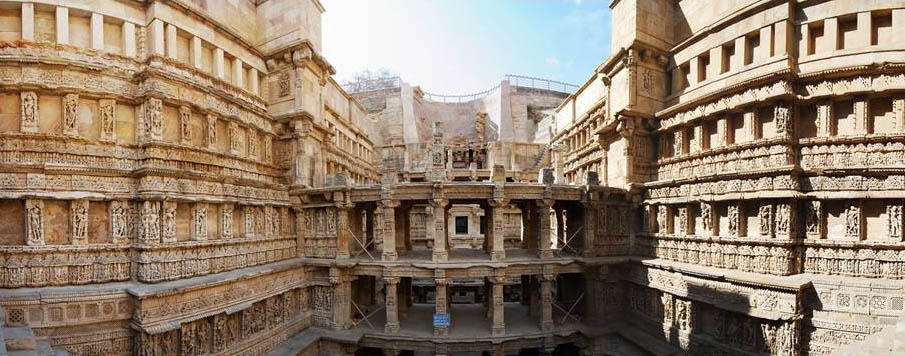
Known for its unique architectural style, this giant queen’s vav is located in Patan city of Gujarat. Once the capital of Gujarat during the medieval period, Patan today stands as a testimony to the bygone era. Patan was a Garhwali town built during the 8th century by Vanraj Chavda, the king of the Chavda kingdom of Chalukya Rajputs. This grand stepwell was built by Udayamati, wife of Bhimdev, the ruler of the Solanki dynasty, in the 10th-11th century in memory of her late husband. This 7-story stepwell was constructed between 1022 and 1063.
Bhimdev, the ruler and founder of the Solanki dynasty, ruled Vadnagar Gujarat from 1021 to 1063 AD. This historic heritage queen, located about 140 kilometers from Ahmedabad, is considered to be a symbol of love for the queen.
It is believed that this unique stepwell was constructed to properly manage the water, as the area received very little rainfall, while according to some folklore, Rani Udayamati aimed to earn merit by providing water to the needy people. Also, the herbs growing on the sides of this monument were used to treat viral fevers, which were fatal diseases at the time.
Situated on the banks of river Saraswati, this huge step-step stepwell was buried in the mud and mud debris for almost 700 years due to the flooding in this river, after which the Archaeological Survey of India in this 80s Excavated the place. After a lot of digging, this stepwell came in front of the whole world.
Suggested Read: Rann of Kutch
Rani Ki Vav Architecture – A Feat of Engineering and Art

“Rani Vav” located in Gujarat is a unique example of 11th-century architecture. This stepwell has been constructed using the Maru-Gurjar architectural style. This unique model of this water collection system is designed in such a way that it showcases the complexity of proper water collection techniques, very beautiful art capability of nuances, and proportions.
The entire structure of this grand staircase is situated below the ground level, which is about 64 meters in length, about 20 meters in width, while it is 27 meters deep. It is one of the oldest and wonderful monuments of its time. The walls of this stepwell are carved with exquisite craftsmanship and beautiful sculptures. It is a seven-storey stepwell with five exit gates and more than 800 statues built-in it still exists today.
Along with this, the exquisite shapes on the stairs of this huge stepwell fascinate the tourists who come here. Let us tell you that from your entry to your depth this unique stepwell is fully equipped with excellent craftsmanship. The amazing structure and unique craftsmanship of this huge stepwell are unique in itself.
The most important thing is that this stepwell is in very good condition even after been cut off for almost 700 years. The pillars of the Vav are unique specimens of the Solanki dynasty and its architecture. This unique stepwell, a seven-storied staircase, has beautifully carved beautiful sculptures and artifacts on its walls. This unique stepwell has more than 500 large sculptures, while more than 1 thousand small sculptures. The idol of Lord Vishnu’s Dashavataras is carved as resting on the thousand-hooded serpent named Sheshnag is found at the water level.
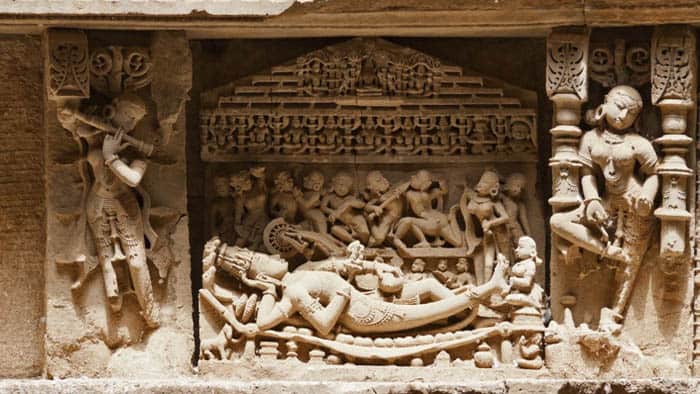
Most of the carvings on the walls and pillars of the Vava are dedicated to Lord Vishnu in many forms of incarnations like Rama, Vamana, Mahishasuramardini, Kalki. Apart from this, the artwork of various deities including Mata Lakshmi, Parvati, Lord Ganesha, Brahra, Kubera, Bhairav , and Surya is also seen in this huge stepwell. There is also a small gate in this Vav, from which a 30-kilometer long tunnel originates. This Vav is 64 meters long, 20 meters wide and 27 meters deep.
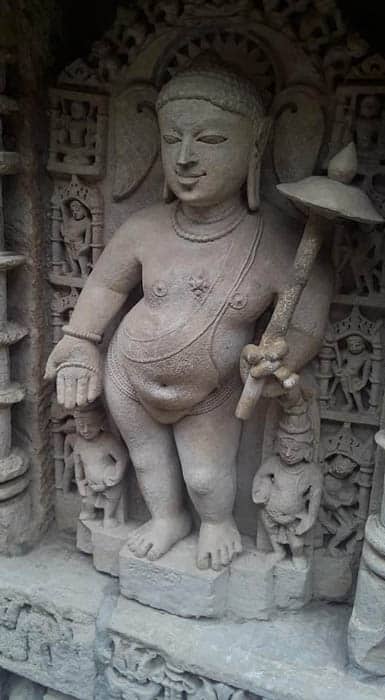
Apart from this, 16 adornments of Indian women on this magnificent stepwell are depicted in a very traditional way. Some amazing sculptures of Nagakanya are also seen inside this stepwell. At the same time, standing in this attractive corridor can take a view of the wonderful stairs of the queen’s Vav. This one-of-a-kind stepwell has been molded into the shape of an urn. Geometric and sketches are made on the walls of this wonderful stepwell.
Rani ki Vav is considered an excellent example of the technique of using groundwater resources in water management systems. It is the most developed and comprehensive example of a unique type of 11th century Indian underground architectural structure, which depicts the story of the development of Vav construction in India.
Suggested Read: Statue of Unity
Rani Ki Vav World Heritage Site
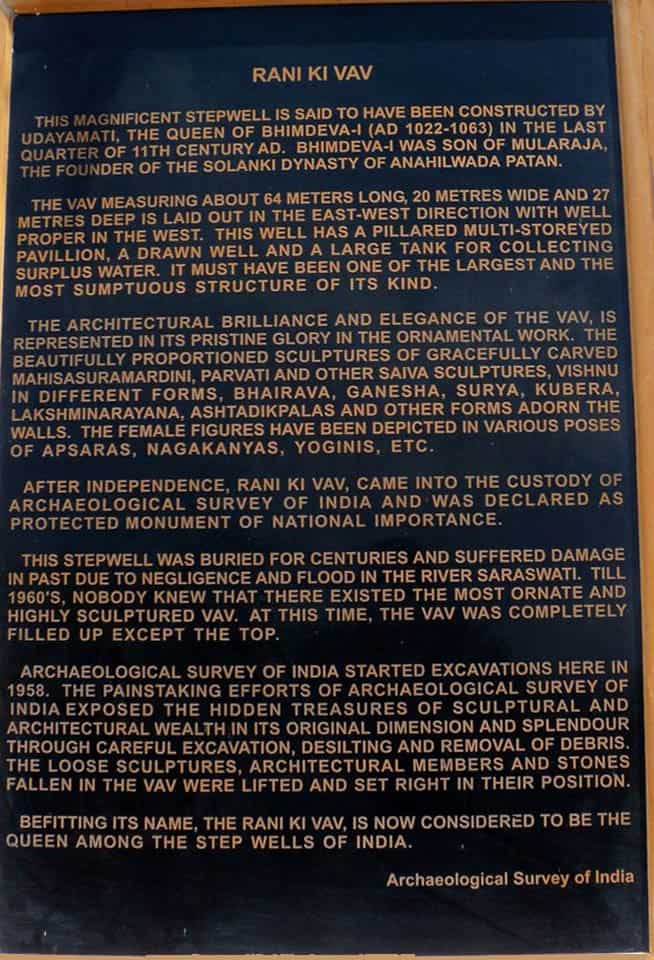
This seven-storey historic and sprawling stepwell, with its unique craftsmanship, amazing texture, and its grandeur, has been included in its World Heritage Site UNESCO World Heritage List in 2014 after it was nominated for the title by Archaeological Survey of India (ASI). ‘Rani ki Vav’ is the only Baoli who has been included in the World Heritage List, which is proof of how good water management was in ancient India.
The local people of Patan have also contributed significantly to getting this precious heritage of India included in the World Heritage List, who have given their full support to the Archaeological Survey of India and the State Government at every step during this process.
Suggested Read: Palitana Mandir
Rani Ki Vav featured on new Rs 100 note
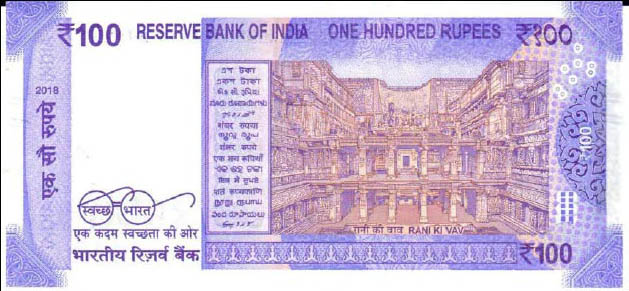
Rani Ki Vav is featured on the new lavender Rs 100 note, Gujarat’s Rani ki Vav has replaced Goecha La, Kanchenjunga’s southeast face on the note. The stepwell was water storage systems that were first constructed in the 3rd millennium BC. The ruins of the stepwell can still be found in Gujarat.
On the back of this 100 rupee note is the 11th-century marvel of a stepwell called Rani Ki Vav or Queen’s Stepwell that is located at a small town called Patan in North West Gujarat.
Interesting Facts about Rani Ki Vav
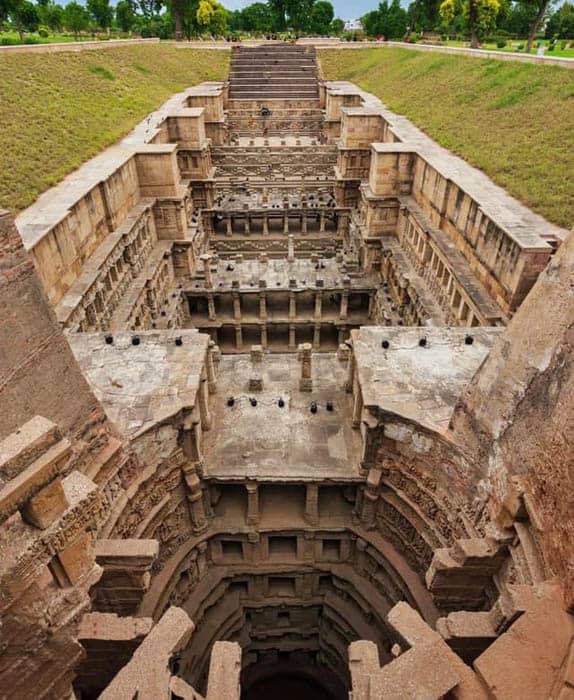
-
Located in Patan, Gujarat, this historic stepwell “Rani Ki Vav” is the only stepwell in the world, which was included in the World Heritage Site due to its amazing structure and unique texture and historical significance. This world-famous Vav is also proof of how good and magnificent the water management system was in ancient India.
-
Considered to be a symbol of love, this huge stepwell was built by Queen Udayamati of Solanki dynasty in the memory of her late husband Bhimdev Solanki (the founder of the Solanki dynasty) in about 10-11th century.
-
Situated on the banks of the Saraswati River, this stepwell is also said to have been submerged in mud, sand and mud debris due to floods for many years and then in the late 80s Indian The Archaeological Survey Department (ASI) excavated this place completely and this stepwell came out to the whole world and the special thing is that despite being buried under the debris for many years, the sculptures of this grand queen, the Vav, are in better craftsmanship meet.
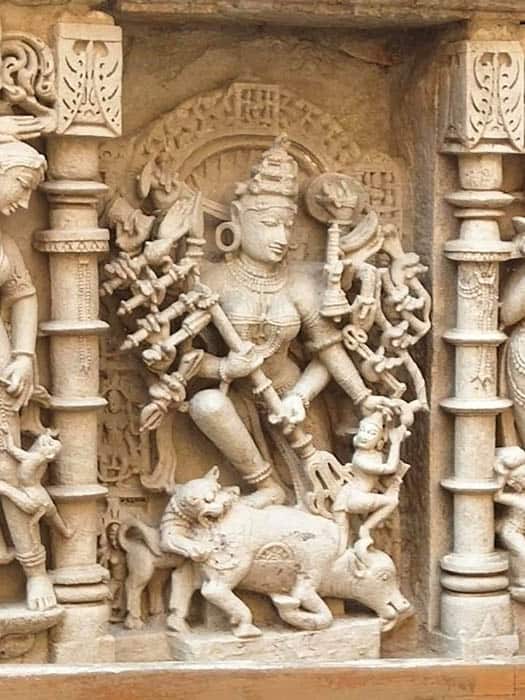
-
Built-in Maru-Gurjar architectural style, this stepwell is about 64 meters high, 20 meters wide and about 27 meters deep, which is spread over an area of about 6 acres. It is one of the largest and grand structures of its type.
-
The steps lead to the deepest bottom through several pillared pavilions. The lowermost step ends at a gate inside which there is a tunnel of about 30 km long, which opens at Siddapur in Patan. Earlier this intelligence route was used by the king and his family in war and difficult situations. At present, this tunnel was now closed with mud and stones.
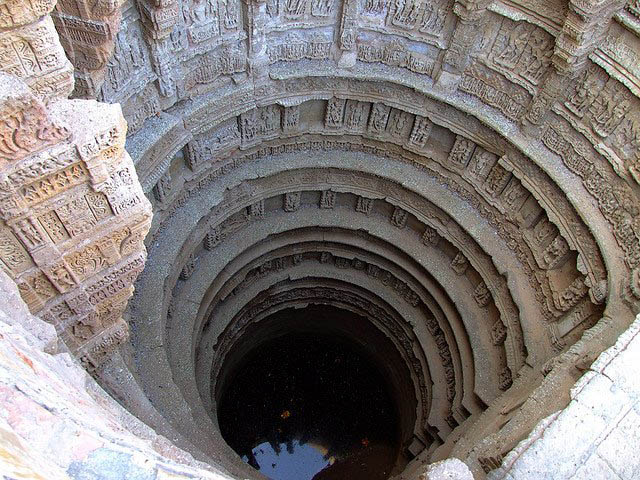
-
The most historical and interesting fact about the world-famous Rani ki Vav is that around 50-60 years ago there were all kinds of Ayurvedic plants around this Stepwell, due to which the water collected in Rani ki Vav is very much for fever, viral diseases, etc, was considered good. At the same time, there is a belief about this stepwell that bathing with this water does not spread diseases.
Suggested Read: Shree Shatruenjay Teerth
-
This unique stepwell located in Patan, Gujarat has been included in the list of World Heritage by UNESCO on 22 June 2014 due to its amazing texture and grandeur.
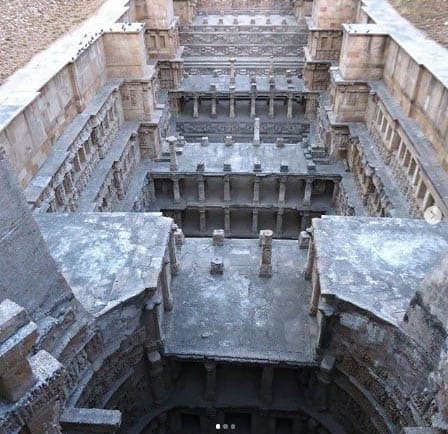
-
Inside this masterpiece of 11th-century architecture, there are many artifacts and beautiful sculptures related to Lord Vishnu. There are many idols of Lord Vishnu in the form of Dashavatar, mainly Narasimha, Kalki Ram, Vamana, Krishna Varahi and other main avatars. Apart from this, idols of many deities including Mother Durga, Lakshmi, Lord Ganesha, Shiva, Brahma Ji, Surya remain in this grand step.
-
Rani ki Vav in Gujarat has more than 500 huge sculptures and more than a thousand small sculptures are engraved on stones very brilliantly. The craftsmanship and carving of the walls and pillars in this step attract tourists visiting here.
-
The fourth floor of this 7-storey stepwell remains the deepest, one of which leads to a rectangular tank of 9.4 meters to 9.5 meters.
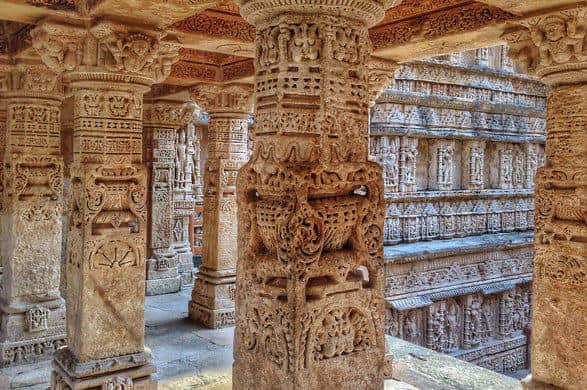
-
This unique stepwell included in the list of World Heritage, the traditional sixteen adornments of Indian women are also displayed in a very spectacular way through the sculptures.
-
Famous for its unique sculpture, two idols of the 11th and 12th centuries were also stolen in this wonderful stepwell, one of them Ganapati and the other Brahma-Brahmani.
-
This seven-storied stepwell was built mainly for the proper management of drinking water, although many folklore is behind its construction, according to one legend, Queen Udayamati constructed this huge stepwell because she wanted to earn virtuous religion by giving water to the needy people.
-
In this seven-storey stepwell, the number of steps in the earlier steps used to be 7, out of which 2 have now disappeared.
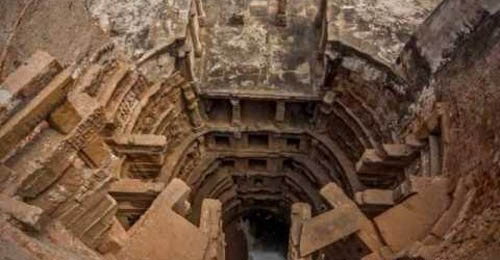
-
The Archaeological Survey of India is responsible for the maintenance of this historic stepwell. This grand queen’s Vav is located in the earthquake-prone area of Gujarat, so Indian archeology has to be vigilant at all times regarding its disaster management.
-
Known for its artwork, this huge historical stepwell has been awarded the “Cleanest Iconic Place” award at the Indian Sanitation Conference held in Delhi in 2016.
-
In 2016, at the Indian Sanitation Conference, this grand queen’s Vav located in Patan, Gujarat was also ranked as the cleanest and most prestigious place in India.
-
In July 2018, RBI has printed this unique model of water collection system on its new 100 rupee note.
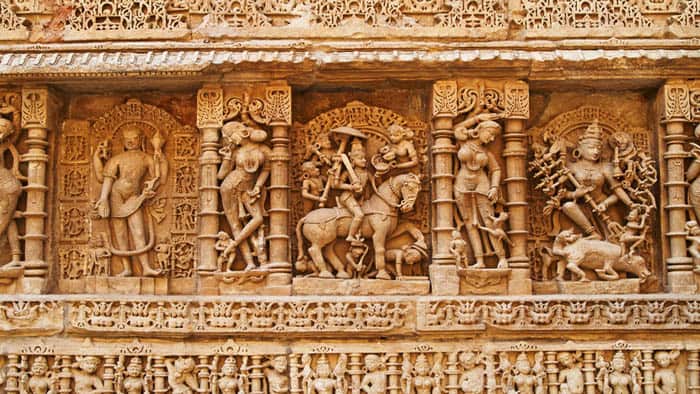
How to reach Rani Ki Vav
The city Patan is well connected by road you can reach there by car, bus, train or plane. The intercity buses from Ahmedabad to Patan take 3.5 hours, and 1 hour from Mehsana. In Mehsana, there is a railway station, and Ahmedabad is the nearest airport connecting the city.
Best time to visit
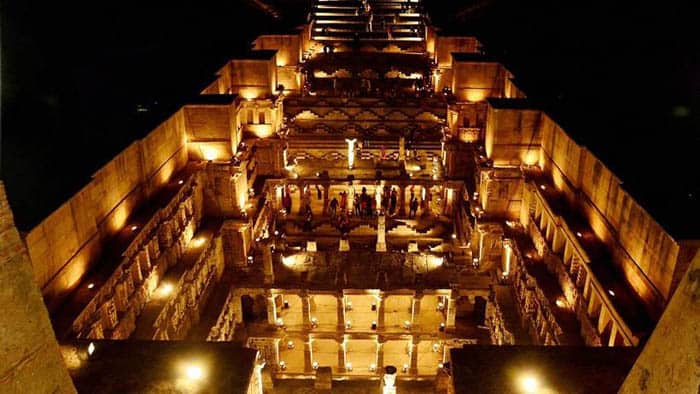
Winter season from October to March is the best time to visit Patan as summer are too hot and humid. November to February is the peak season for tourist which attract considerable number to tourist from different parts of the country. During the month of December or January, a Rani ki Vav festival is held where one can enjoy the cultural programs along with exquisite local cuisine and street shopping.


